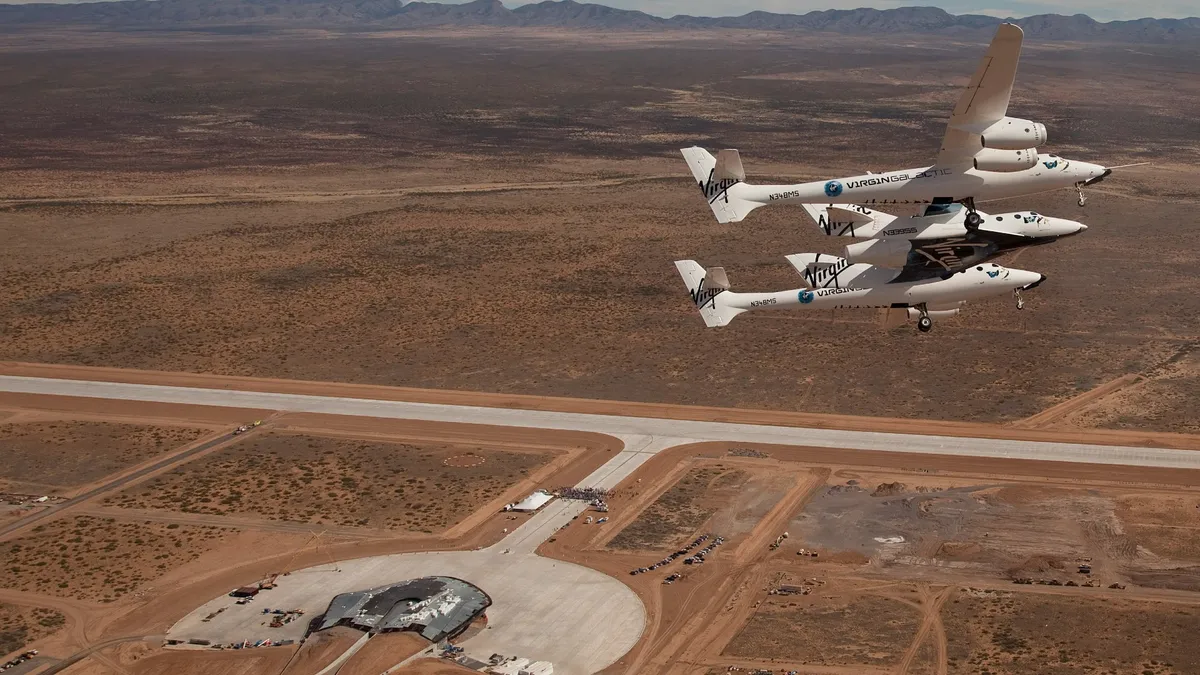
Spaceport America, located in the southern New Mexico desert, holds the distinction of being the first purpose-built commercial spaceport in the world. Under the leadership of Executive Director Scott McLaughlin, the spaceport is poised for significant growth and innovation. With a vast area of 6,000 square miles of restricted airspace, low population density, and a state-of-the-art 12,000-foot by 200-foot runway, Spaceport America is designed to support a multitude of commercial space ventures.
Home to prominent tenants in the commercial space industry such as Virgin Galactic, SpinLaunch, Up Aerospace, and Prismatic, Spaceport America boasts ideal conditions for both launches and tests. The facility enjoys approximately 340 days of sunshine and low humidity, which enhances its attractiveness for year-round operations. Scott McLaughlin, an engineer with a strong background in design and business marketing, is focused on expanding the capabilities of this innovative spaceport.
In an exclusive interview with Space.com during the Space Foundation's 40th Space Symposium, McLaughlin shared insights into the current state and future aspirations of Spaceport America. When asked about the spaceport's viability for orbital launch and reentry, he emphasized the importance of being prepared and responsive to market demands. The spaceport features distinct areas for various operations, including a vertical launch area (VLA) that is being developed to accommodate orbital launches and tests of potentially explosive equipment.
McLaughlin highlighted the growing interest in supporting horizontal launches. To enhance these capabilities, Spaceport America is expanding access roads and constructing a versatile hangar. This facility will serve as a security center, a STEM education center, and provide leasable office space. Additionally, it will include a small conference area and support for small vehicle and payload processing, marking a significant shift in operations.
The ever-evolving landscape of the commercial space sector has prompted Spaceport America to adapt its offerings. McLaughlin noted that the spaceport is increasingly functioning as a civilian test range, welcoming high-altitude unmanned aerial vehicles (UAVs) and facilitating engine production. Notably, Spaceport America is on the verge of signing a contract for a data center that will provide essential services, such as low-latency artificial intelligence and high-powered computing, to its clientele.
Virgin Galactic's suborbital flights have attracted attention to Spaceport America, and McLaughlin expressed optimism about the company's future operations. He anticipates that Virgin Galactic could conduct flights twice a week, which would significantly benefit the spaceport and the surrounding region. Each passenger is expected to bring along approximately 20 friends or family members, potentially turning the spaceport into a hub for tourism in New Mexico.
Looking ahead, McLaughlin emphasized the need for collaboration with the U.S. Army White Sands Missile Range to utilize the airspace effectively. The spaceport is exploring various opportunities, including the development of an electromagnetic pulse facility for an undisclosed customer. The long-term vision includes establishing capabilities for orbital launches and ensuring that the spaceport can accommodate both takeoff and reentry operations.
McLaughlin revealed that Spaceport America is actively working on obtaining a reentry license. This would allow for capsule returns and other types of reentry operations at a site close to the spaceport, which is flat and free of obstructions. The combination of vertical and horizontal launch capabilities and the potential for reentry positions Spaceport America as a unique player in the commercial space industry.
While acknowledging that Spaceport America may not match the throughput of coastal launch sites like Cape Canaveral, McLaughlin pitched the advantages of being an inland spaceport. He pointed out that for small to medium-sized launches, the facility offers a quicker and potentially more secure option than traditional coastal sites, which is particularly appealing to the Department of Defense.
In promoting Spaceport America, McLaughlin emphasized the need to broaden the narrative beyond Virgin Galactic. While proud of the partnership with the company, he stressed that Spaceport America has much more to offer. The spaceport aims to convey that it is not only a launch site for Virgin Galactic but a hub for various innovative projects and aspirations in the aerospace industry.
With a vision rooted in growth, adaptability, and collaboration, Spaceport America is set to play a pivotal role in shaping the future of the commercial space sector.